Treasures of the past: Art secrets of the country's most beautiful historic houses
10 May 2023
Hidden Treasures of the National Trust is a new six-part BBC series that goes back in time at the UK's most beautiful and historic houses. Meet the dedicated experts who look after treasured objects at the three elegant Midlands properties featured in the first episode.


Hardwick Hall, Derbyshire
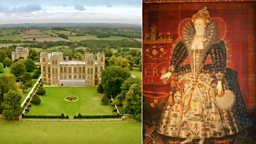
Sitting high on a Derbyshire hilltop and surrounded by 2,000 acres of parkland, this spectacular house was personally commissioned in 1590 by the formidable Bess of Hardwick.

It's like when you tune a violin string, the frequency of the canvas changes slightly.Rebecca Hellen, Paintings Conservator
According to Rebecca Hellen, Senior National Conservator of Paintings at the National Trust, Bess was “almost like the Queen of the North”.
“She's a woman who rises from quite a middle-class background through her sheer force of character, intelligence and several marriages, to a very high position in British society,” she says.
One of Bess’s most valuable friendships was with Elizabeth I and, among more than 8,000 precious artworks and artefacts in Hardwick, a portrait of Elizabeth presides over the house's Long Gallery.
'Sea Monster'
Known as the ‘Sea Monster’ portrait because of the depictions of mythological sea creatures that decorate Elizabeth’s dress, the painting now faces an ocean crossing of its own.
It is going out on loan for a tour of North America, starting at the Met in New York, and conservators must ready the painting for its journey.
Although the portrait seems in good condition, UV lights that can see beyond the naked eye reveal some pockmarks in the 400-year-old paintwork.
Packaging it up in specialist crates designed for transporting artwork requires supreme care. Rebecca says that one extra measure they take is affixing a stretcher-bar lining to the back of the canvas, which works “like a kind of undergarment”.
“It creates a little air cushion, so you're just giving the painting that little bit of extra physical support,” she says.
“It's like when you tune a violin string, the frequency of the canvas changes slightly, and the amount of vibration going through just calms down a bit.”




Biddulph Grange, Staffordshire

Victorian horticulturalist James Bateman inherited a family fortune and spent it on creating a garden wonderland in the grounds of Biddulph Grange.
It features plants and objects collected from, and inspired by, countries all around the world, but as the programme discovers, one of its most important parts must be restored.
An ornate wooden bridge that originally stood in the centre of its China Garden is no longer able to hold the weight of visitors safely, so an identical replacement must be built.
The programme follows National Trust joiner Sam Tinsdeall and his team as they piece together hundreds of individually carved parts.





Belton House, Lincolnshire

Built by Sir John Brownlow in the 1680s, Belton House has a world-renowned library and collections of art, silver and ceramics.
The history of the family is usually quite well documented, but when you dig beneath there are all sorts of other narratives.Charlotte Holmes, Cultural Heritage Curator
Charlotte Holmes, Cultural Heritage Curator at the National Trust, says one of the joys of her job is “telling the histories that may have been overlooked”.
“With somewhere like Belton, the history of the family is usually quite well documented, but when you dig beneath there are all sorts of other narratives within the collection and within the archives,” she says.
One of the narratives uncovered by the programme is what emerges from the deep clean of a portrait of Sir John’s daughter, Margaret: another figure that was faded into the background.





Watch the programme - episode one

Transporting priceless artwork
A 400-year-old painting of Elizabeth I is carefully packed for a long flight.
You can watch the first episode of Hidden Treasures of the National Trust now on BBC iPlayer.

Quizzes on BBC Arts
-
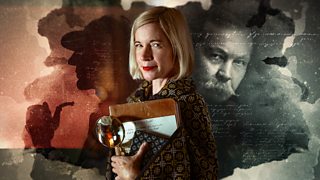
Sherlock Holmes quiz: What's the truth about Arthur Conan Doyle?
No way, Sherlock... are these things true or false?
-
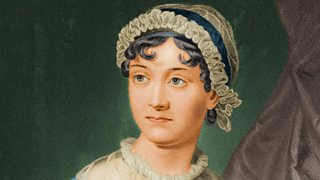
How well do you know Pride and Prejudice?
Take the hardest Pride and Prejudice quiz ever and prove you are a true super-fan of the Jane Austen classic
-

Are you a musicals genius?
Find out if your musicals knowledge is Wicked or more Les Miserables
-
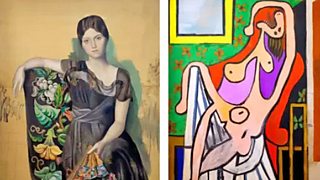
Picasso or pixel?
Can you separate the AI fakes from the genuine paintings by Pablo Picasso?
-
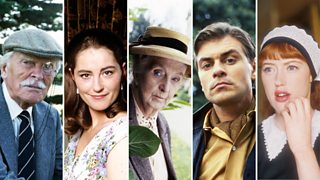
Which Agatha Christie character are you?
Answer these probing questions and discover your ideal murder mystery role
-

Have you got Frida Kahlo fever?
Seven trivia questions about the extraordinary life and art of Frida Kahlo
-

Between the Covers celebrity book battle
Can you match the celebrities to their favourite books?
-

Do you know your Gollum from your Gandalf?
Take the toughest ever Lord of the Rings quiz
More from BBC Arts
-
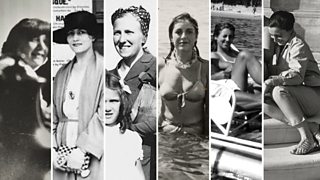
Picasso’s ex-factor
Who are the six women who shaped his life and work?
-

Quiz: Picasso or pixel?
Can you separate the AI fakes from genuine paintings by Pablo Picasso?
-

Frida: Fiery, fierce and passionate
The extraordinary life of Mexican artist Frida Kahlo, in her own words
-

Proms 2023: The best bits
From Yuja Wang to Northern Soul, handpicked stand-out moments from this year's Proms
Arts on iPlayer
-

Caroline Aherne: Queen of Comedy
Exploring a unique talent and body of work; with Sue Johnston, Ricky Tomlinson, Steve Coogan, Ralf Little & Lemn Sissay
-

Peaky Blinders: Rambert’s The Redemption of Thomas Shelby
Thrilling stage adaptation performed by the Rambert dancers to an iconic soundtrack
-

Killing Sherlock: Lucy Worsley on the Case of Conan Doyle
The ultimate power struggle between the greatest detective who never lived and the writer who came to resent him
-

Shakespeare: Rise of a Genius
Acting legends reflect on the greatest writer who ever lived
